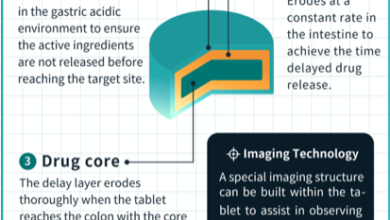
Lilly Alzheimer’s medication slows decline
[ad_1]
Eli Lilly and Company have announced positive results from the phase 3 TRAILBLAZER-ALZ 2 study showing that donanemab significantly slows cognitive and functional decline in people with early symptoms of Alzheimer’s disease.
Donanemab met the primary endpoint of change from baseline to 18 months on the integrated Alzheimer’s Disease Rating Scale (iADRS). The main iADRS endpoint measures cognition and activities of daily life such as managing finances, driving, engaging in hobbies, and talking about current events.
All secondary end points of cognitive and functional decline were met and demonstrated statistically highly significant clinical benefit of equal magnitude. Based on these results, Lilly said it would proceed with global regulatory filings as soon as possible and anticipates filings with the US Food and Drug Administration (FDA) later this quarter.
Lilly said it would work closely with the FDA and other global regulators to achieve the fastest path to traditional approval.
Future drug development
Andrea Pfiefer, CEO of AC Immune, told Labiotech that the announcement bodes not only well for Alzheimer’s patients, but for future drug development at Lilly and other companies.
“This news is great for patients, their families and the entire industry and it is just the start of the next stage in Alzheimer’s drug development,” said Pfiefer.
“Today’s donanemab data demonstrate clearly that targeting and clearing of pyroglu-Abeta, the second toxic Abeta protein species seen in Alzheimer’s disease, also has clear benefits on plaque levels and clinical performance. This further confirms and complements the results seen with lecanemab and strengthens the validation of the amyloid beta hypothesis. In addition, the need for progress toward appropriate treatment and prevention of Alzheimer’s disease will accelerate the development of Abeta-targeted therapies that are even safer and easier to administer.”
Pfiefer said for AC Immune’s own anti-Abeta vaccine, ACI-24, which targets pyroglu-Abeta and soluble Abeta oligomers, both targeted by lecanemab and donanemab, respectively, Lilly’s results were “very encouraging”.
Lilly’s study details
TRAILBLAZER-ALZ 2, the Lilly randomized, double-blind, placebo-controlled study, evaluating the safety and efficacy of donanemab, an investigative amyloid plaque-targeting therapy. This study enrolled people with early symptomatic Alzheimer’s disease (AD), which includes mild cognitive impairment (MCI) and mild dementia stages of the disease, with the presence of confirmed AD neuropathology, and participants completed their treatment with donanemab once they achieved the prescribed levels of amyloid plaque clearance. previously.
Participants in TRAILBLAZER-ALZ 2 were grouped based on their levels of the brain protein tau, a predictive biomarker for the development of Alzheimer’s disease. The primary analysis population consisted of people with moderate levels of tau and clinical symptoms of Alzheimer’s disease.
In this population, the primary end point (iADRS) showed a 35% delay in decline (p<0.0001), and the important secondary end point (Clinical Dementia Rating-Sum of Boxes, or CDR-SB) showed a 36% delay in decline during 18 years. month. An additional prespecified secondary analysis showed 47% of participants on donanemab showed no reduction in the CDR-SB, a key measure of disease severity at one year (compared with 29% of participants on placebo).
Results also showed 52% of participants completed their treatment within one year and 72% completed within 18 months as a result of plaque removal.
Donanemab participants had 40% less decline in ability to perform activities of daily living at 18 months, as measured by the Alzheimer’s Disease Cooperative Study – Instrumental Activities Inventory of Daily Living (ADCS-iADL).
Donanemab participants experienced a 39% lower risk of progressing to the next stage of disease compared to placebo (CDR-Global Score).
35% slow down
“Over the last 20 years, Lilly scientists have blazed new trails in the fight against Alzheimer’s disease by elucidating the basic mechanisms of AD pathology and discovering imaging tools and blood biomarkers to track pathology,” said Daniel Skovronsky, Lilly’s chief scientific and medical officer. and president of Lilly Research Laboratories.
“We are very pleased that donanemab produced positive clinical results with convincing statistical significance for people with Alzheimer’s disease in this trial. This is the first phase 3 trial of any investigative drug for Alzheimer’s disease resulting in a 35% delay in clinical and functional decline.”
The study also enrolled a small number of people with high levels of tau at baseline, representing a later stage of disease progression. Because these participants were expected to progress more rapidly and be less responsive to therapy, the study target population was an intermediate tau population. High tau participants were combined with the medium tau population in the supplementary primary analysis of all enrolled participants. In this combined population, donanemab also showed significantly positive results across all clinical endpoints, with CDR-SB and iADRS showing 29% and 22% delays in decline, respectively.
The incidence of amyloid-associated imaging abnormalities (ARIA) is consistent with the TRAILBLAZER-ALZ phase 2 study. ARIA is observed with class amyloid plaque-clearing antibody therapy and is most commonly observed as transient swelling of an area or areas of the brain (ARIA-E) or as micro-haemorrhage or superficial siderosis (ARIA-H), in both cases detectable by MRI.
In the donanemab treatment group as a whole, ARIA-E occurred in 24.0% of treated participants, with 6.1% having symptomatic ARIA-E. ARIA-H occurred in 31.4% in the donanemab group and 13.6% in the placebo group. Most cases of ARIA are mild to moderate and resolve or stabilize with appropriate management. ARIA is usually asymptomatic, although serious and life-threatening events can occur. In this study, the incidence of serious ARIA was 1.6%, including two participants whose deaths were caused by ARIA and a third participant who died after a serious ARIA incident. Infusion-related reactions occurred in 8.7% of participants with most cases of mild to moderate severity.
Associated risks
“We are encouraged by the potential clinical benefits donanemab can provide, although like many effective treatments for debilitating and fatal diseases, there are associated risks that may be serious and life-threatening,” said Mark Mintun, vice president of the Neuroscience Research & Development group at Lilly, and president of Avid Radiopharmaceuticals.
“We note that these results suggest that people in the early pathological stages of the disease may be the most responsive to amyloid-targeted therapies. We thank the participants in the clinical trials and their loved ones for their time and commitment to finding solutions to this disease.”
In addition to slowing cognitive and functional decline in TRAILBLAZER-ALZ 2, donanemab resulted in a significant reduction in brain amyloid plaque levels as early as six months after starting treatment, as observed using positron amyloid emission tomography (PET) brain scans, with many patients achieving amyloid levels which was considered negative for pathology (34% of participants in the intermediate tau population achieved amyloid clearance within six months and 71% achieved clearance within 12 months).
“Clinical benefit” for Alzheimer’s patients
“Amyloid plaques are a defining pathophysiological feature of Alzheimer’s disease,” said Eric Reiman, CEO of Banner Research, one of the research sites for the TRAILBLAZER-ALZ 2 trial.
“The primary results of this study provide strong support for the association between amyloid plaque removal and clinical benefit in people with this disease.”
“These phase 3 data confirm the benefits observed in our TRAILBLAZER-ALZ study and demonstrate that donanemab, if approved, could represent a significant step forward for people with early symptoms of Alzheimer’s disease, and enable them to continue to participate in activities that are meaningful to them. them,” said Anne White, executive vice president of Eli Lilly and Company and president of Lilly Neuroscience.
“We believe our data meets the ‘high level of evidence’ that the Centers for Medicare & Medicaid Services (CMS) describes as triggering a reconsideration of its National Coverage Determinations. People with early-stage Alzheimer’s disease need and deserve full protection and access to approved therapy.”
Full results from this study will be presented at the Alzheimer’s Association International Conference in July and submitted for publication in a peer-reviewed clinical journal.
Lilly says it continues to study donanemab in multiple clinical trials, including TRAILBLAZER-ALZ 3, which focuses on prevention of symptomatic Alzheimer’s disease in participants with preclinical AD; TRAILBLAZER-ALZ 5, a registration trial for early symptom Alzheimer’s disease currently registered in China; and TRAILBLAZER-ALZ 6, which is focused on expanding our understanding of ARIA through new MRI sequences, blood-based biomarkers, and different donanemab dosing regimens.
Open the door
The results also benefit other companies such as AC Immune which is active in Alzheimer’s research, said Pfeifer.
“For smaller companies in the industry, such as AC Immune who are developing the next generation of Alzheimer’s treatments, these data, in particular the use of surrogate markers such as amyloid PET imaging that could accelerate development, and hopefully the availability of both drugs to patients, will open the door to great interest. bigger than the pharmaceutical companies and the investment community,” said Pfiefer.
Pfeifer says ACI-24 AC Immune is well on its way in phase 2 of development and has been shown to be safe while also generating a strong antibody response against these two species.
[ad_2]
Source link






